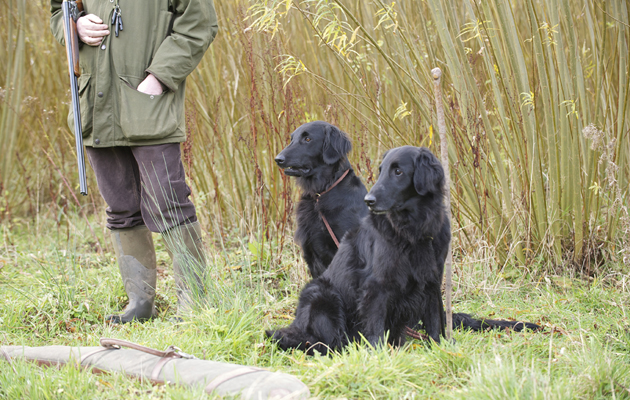The flatcoat's tragic susceptibility to disease must be addressed, warns David Tomlinson
Always the Edwardian country gentleman’s companion, these days the flatcoated retriever still has its fans, although its popularity has been eclipsed by the labrador. (Read: Flatcoated retrievers – the Edwardian gun’s choice.)
However the breed’s fatal flaw is its susceptibility to cancer.
The flatcoated retriever
The breed’s popularity peaked in the early years of the 20th century and faded sepia photographs from that time show guns in tweeds, armed with side-by-side sidelocks, accompanied by flatcoats. But by the outbreak of the First World War the breed had been eclipsed by the labrador.
All-conquering labrador
Flatcoat enthusiasts were less than enthusiastic about the arrival of the all-conquering labrador. One reader, writing in 1909, listed one by one the points in favour, and against, the two breeds. The fact that the labrador’s coat “does not pick up mud or wet” was certainly in its favour, as was the fact that it was “hardier: stand exposure to heat better”. No so good was the fact that it “often uses its eyes too much and casts forward if scent weak”.

In 2016, just 1,348 flatcoats were registered with the Kennel Club, compared with 33,856 labradors.
Friendly and affectionate
He thought the flatcoat had “an excellent mouth, as a rule” but “in style, slow, inclined to potter” and it was “inclined to be slack on a hot day in the heather”, when the labrador was the better dog. I was amused to read that he regarded the labrador as “excellent companion to owner, but essentially a one-man dog”, whereas the flatcoat is “very friendly and affectionate with master and everyone else”. Temperaments have clearly changed, for the latter description would fit almost every labrador that I have ever met.
If you fancy an elegant retriever that will pick up with style and stand out from the labrador crowd, then choose a flatcoat. The breed retains many passionate supporters who work their dogs with great success. They will probably agree with you that flatcoats are slow to mature and that some never grow up – not for nothing is the flatcoat called the Peter Pan of the gundog world – but they are dogs with charm.
They are also unique among our native gundog breeds in that there is no marked division between show and working types, despite the breed’s popularity in the show ring. Crufts usually attracts around 400 flatcoats, making it third in the popularity stakes in the gundog show world, with only the labrador and golden retriever outnumbering it. This is despite that fact that annual registrations fall way below the other two breeds.

Eclipsed today by the labrador, flatcoats were the Edwardian gentleman’s gundog of choice.
Colours
Flatcoats come in two recognised colours: black and liver. However, yellow flatcoats are by no means rare, a reminder of the fact that, historically, all the retriever breeds have been interbred. Because yellow dogs cannot be shown, these yellow dogs are rarely bred from.
Cancer in flatcoated retriever
Sadly, the flatcoat has one serious drawback: cancer. Whenever I meet anyone working flatcoats, I ask them whether they have lost dogs to cancer and invariably the answer is yes. A long-running Cambridge University study found that half of all flatcoats will have contracted cancer by the age of eight, with many dying from the disease. The killer is usually malignant histiocytosis, a multi-system, rapidly progressive type of cancer. However, soft-tissue sarcomas are a major killer of younger dogs.
Ask the breeder about the medical history of the parents, grandparents and even great-grandparents if you are thinking of buying one. Cancer is by no means the only disease the breed is prone to, the list of complaints ranging from epilepsy to glaucoma. Prospective buyers should consider carefully whether to purchase a puppy if any of the recognised diseases are in the family line. If the breeder is reluctant to talk about health then look elsewhere.
Labrador/flatcoated retriever cross?
The future for the breed may well lie in an outcross to a labrador, bringing in fresh blood and the chance to eradicate the cancer genes prevalent in most lines. No doubt enthusiasts will greet such a suggestion with horror but which is more important, health or breed purity?
This article was originally published in 2017 and has been updated.





